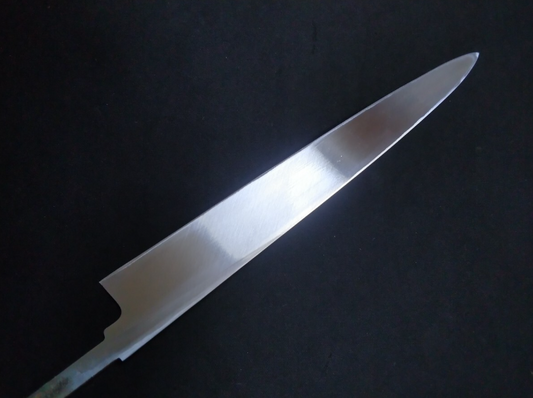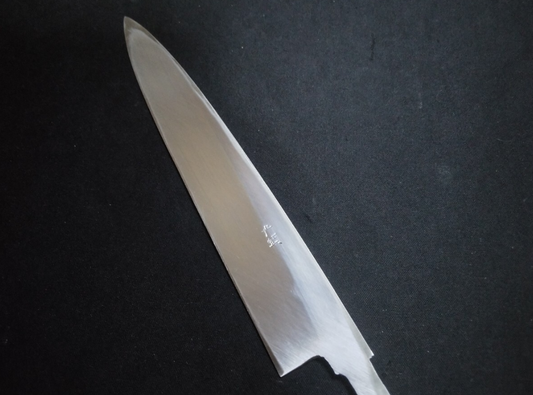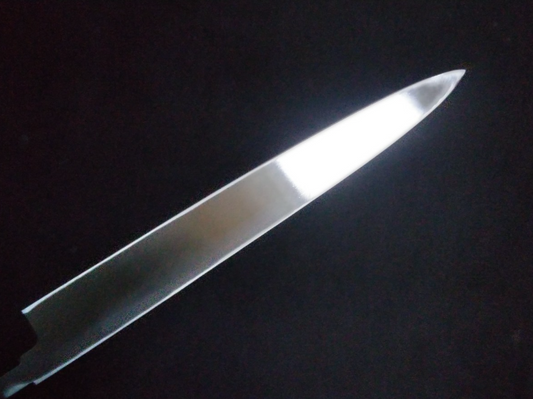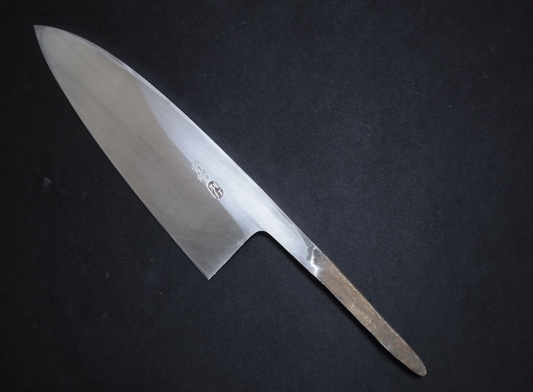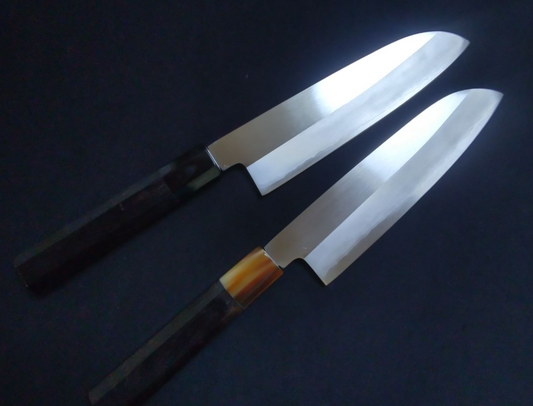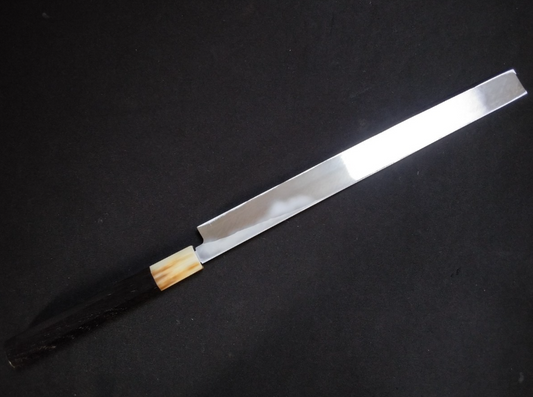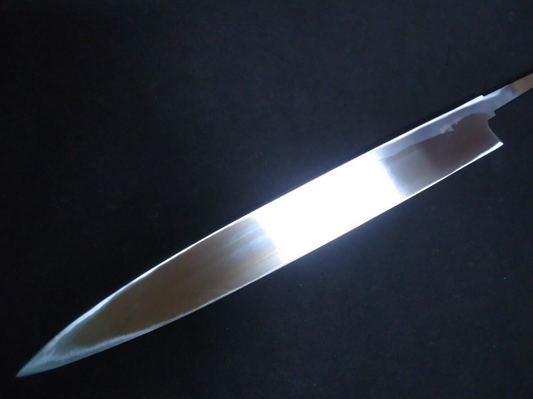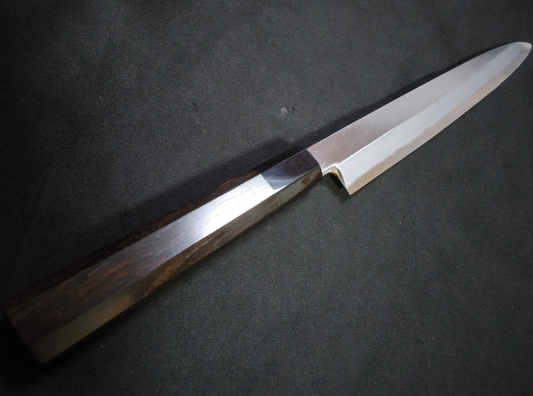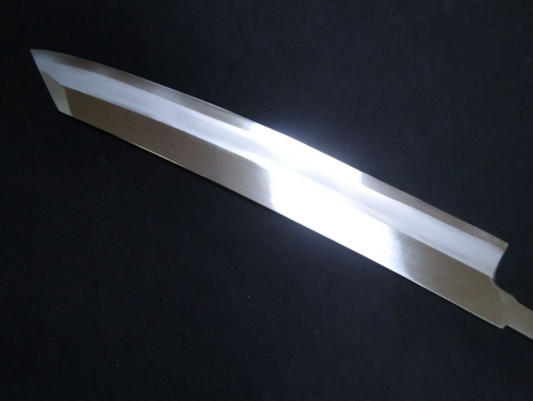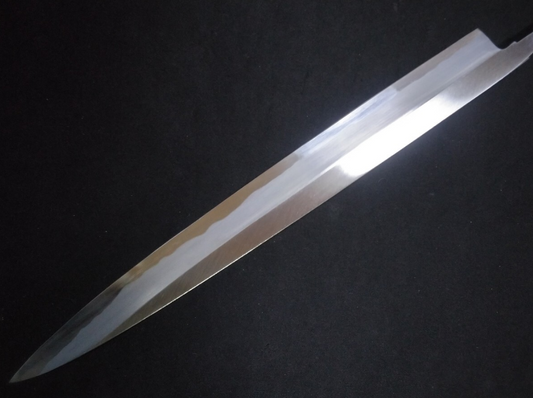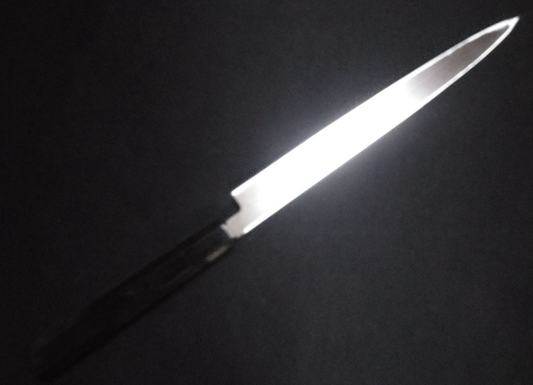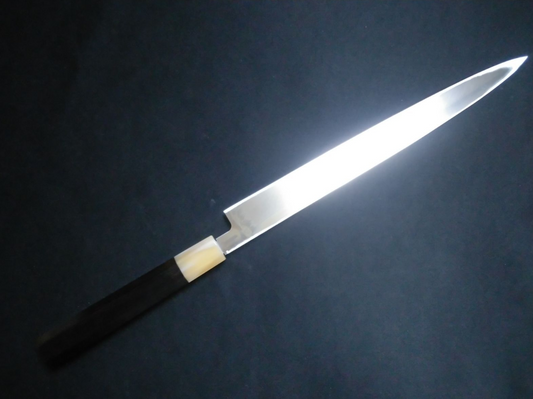
Kido Finishing
-
What makes a Japanese knife truly exceptional?
Not just the steel, nor just the edge—but the finish.
In Sakai, Japan, the rare hand-polishing art of Kido Finishing gives each blade a subtle glow, unmatched smoothness, and an elegance born from generations of craftsmanship. -
Kido Finishing Knife Collection
-
White Steel #2 Yanagiba 240mm-Kido Finishing
Regular price $270.00 CADRegular priceUnit price / per -
Blue Steel #2 Yanagiba 210mm- Kido Finishing
Regular price $300.00 CADRegular priceUnit price / per$0.00 CADSale price $300.00 CAD -
White Steel #2 Yanagiba 270mm-Kido Finishing
Regular price $310.00 CADRegular priceUnit price / per -
Blue Steel #2 Deba 165mm- Kido Finishing
Regular price $310.00 CADRegular priceUnit price / per$0.00 CADSale price $310.00 CAD -
Ginsan Santoku 180mm-Kido Finishing
Regular price $320.00 CADRegular priceUnit price / per$0.00 CADSale price $320.00 CAD -
White Steel #2 Takohiki 270mm-Kido Finishing
Regular price $350.00 CADRegular priceUnit price / per -
Blue Steel #2 Yanagiba 270mm- Kido Finishing
Regular price $350.00 CADRegular priceUnit price / per$0.00 CADSale price $350.00 CAD -
White Steel #1 Yanagiba 270mm-Kido Finishing
Regular price $380.00 CADRegular priceUnit price / per -

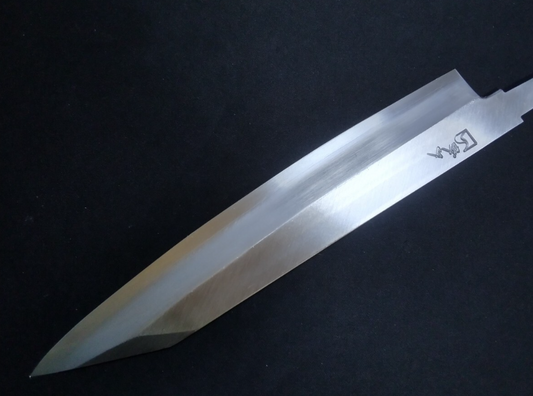 Sold out
Sold outGinsan Gyuto 240mm -Kido Finishing
Regular price $410.00 CADRegular priceUnit price / per$0.00 CADSale price $410.00 CADSold out -
Super Steel (Honyaki) Yanagiba(Kiritsuke) 210mm-Kido Finishing
Regular price $420.00 CADRegular priceUnit price / per$0.00 CADSale price $420.00 CAD -
Blue Steel #2 Gyuto 270mm-Kido Finishing
Regular price $420.00 CADRegular priceUnit price / per$0.00 CADSale price $420.00 CADSold out -

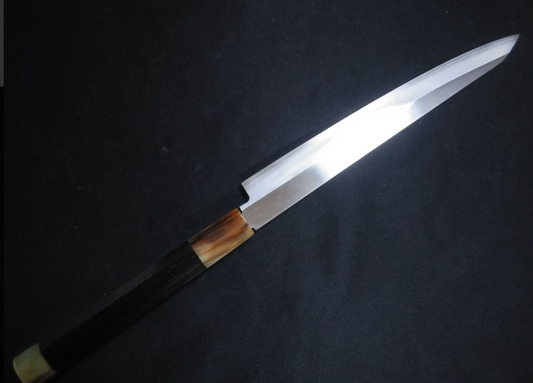 Sold out
Sold outZDP189 Petty 210mm-Kido Finishing
Regular price $420.00 CADRegular priceUnit price / per$0.00 CADSale price $420.00 CADSold out -
Blue Steel #2 Yanagiba 360mm- Kido Finishing
Regular price $450.00 CADRegular priceUnit price / per$0.00 CADSale price $450.00 CAD -
Ginsan Gyuto (Kiritsuke) 240mm -Kido Finishing
Regular price $460.00 CADRegular priceUnit price / per$0.00 CADSale price $460.00 CADSold out -
Super Steel (Honyaki) Yanagiba 270mm-Kido Finishing
Regular price $610.00 CADRegular priceUnit price / per$0.00 CADSale price $610.00 CADSold out -
Super Steel (Honyaki) Yanagiba 300mm-Kido Finishing
Regular price $640.00 CADRegular priceUnit price / per$0.00 CADSale price $640.00 CADSold out
KIREAJI's Three Promises to You
-

1. Forged in the Legacy of Sakai
From Sakai City—Japan’s renowned birthplace of professional kitchen knives—each blade is crafted by master artisans with over six centuries of tradition. Perfectly balanced, enduringly sharp, and exquisitely finished, every cut carries the soul of true craftsmanship.
-

2. Thoughtful Care for Everyday Use
Every knife includes a hand-fitted magnolia saya for safe storage. Upon request, we offer a complimentary Honbazuke final hand sharpening—giving you a precise, ready-to-use edge from day one.
-

3. A Partnership for a Lifetime
A KIREAJI knife is more than a tool—it is a lifelong companion. With our bespoke paid aftercare services, we preserve its edge and beauty, ensuring it remains as precise and dependable as the day it first met your hand.
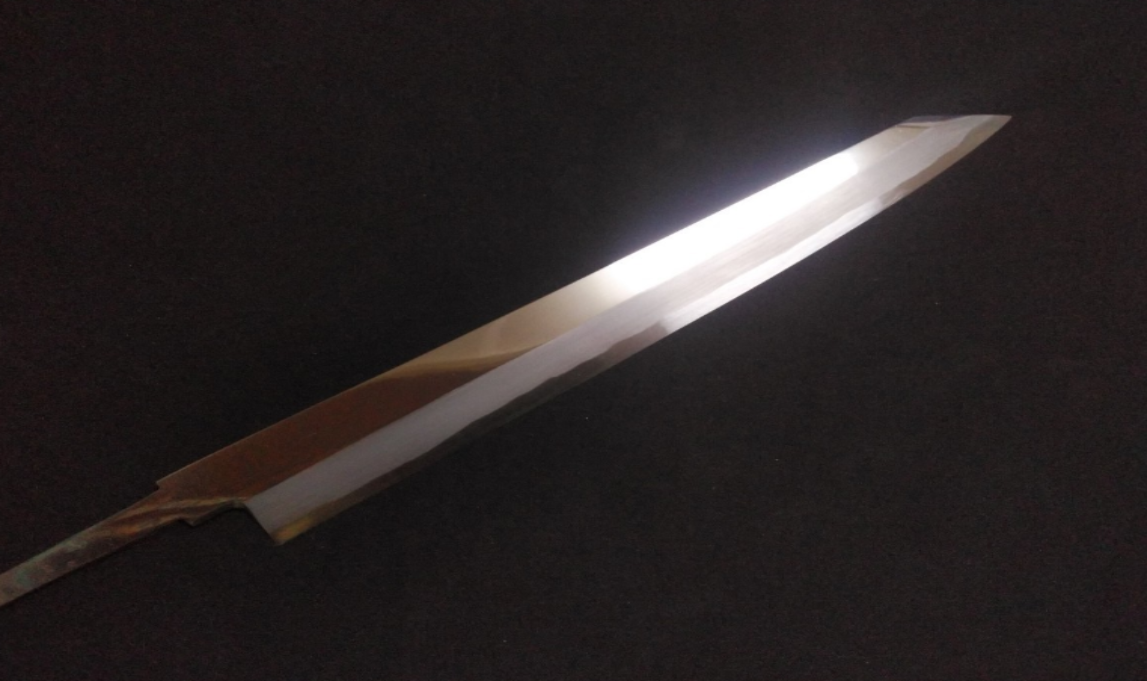
Why Many Product Photos Show Only the Blade
At KIREAJI, every knife is made to order in Sakai, Japan. Photos show the blade before the handle is attached, allowing artisans to perfect the balance and edge for your specific order. Your knife arrives fully finished — tailored just for you.

Global Delivery from Sakai
Across the world, discerning cooks seek authentic Japanese knives from Sakai — Japan’s legendary knife-making city with over 600 years of tradition.
At KIREAJI, we work alongside master artisans in Sakai to fulfill that desire, shipping genuine handcrafted knives directly from the workshop to kitchens worldwide.
Ⅰ. Why Kido Finishing Exists Only in Sakai — The Subtle Art Few Can Master
-
Kido Finishing is one of the rarest polishing techniques in Japan—and it lives almost exclusively in Sakai. Its hallmark is a soft, refined luster, neither a full mirror polish nor a frosted kasumi finish, but something in between—a calm, elegant glow that reveals the soul of the blade.
So why is this method found nowhere else? Three reasons stand out:
-
1. An Art Too Demanding to Reproduce Elsewhere
Kido Finishing demands absolute control over moisture, pressure, angle, timing, and wheel speed, all adjusted by feel and experience. The slightest misstep can ruin the finish. In Sakai, generations of polishing masters have spent decades refining this technique, passing it down like a closely guarded secret. Outside Sakai, very few craftsmen have both the training and the environment to master it with the same consistency.
-
2. Sakai’s Unique Division of Labor Makes It Possible
In Sakai, knife-making follows a highly specialized division of labor—forging, sharpening, handle-fitting, and polishing are each handled by dedicated experts. This system allows polishers to focus entirely on perfecting finishes like Kido, which require long hours of careful, repetitive work.
In other regions, craftsmen often make knives from start to finish themselves. With so many steps to handle, they rarely have the time to dedicate to such an exacting polishing method. -

3. A Beauty Rooted in Local Aesthetics
Kido Finishing produces a quiet elegance—a glow that whispers rather than shouts. But beauty is subjective. Other regions may prefer a high-gloss mirror finish or a misty kasumi look. Over time, these preferences shaped different polishing traditions, leaving Kido Finishing as a style deeply tied to Sakai’s own aesthetic values.
-
In Essence
Kido Finishing exists only where three elements converge: extraordinary skill, a collaborative craft system, and a regional taste for subtle beauty. That rare combination is found only in Sakai. And so, this finish remains a signature of knives born in the city that has perfected the art of refinement.
Kido Finishing: The Quiet Brilliance Found Only in Sakai
-

Kido finishing embodies Sakai’s deepest traditions—a soft, elegant sheen that cannot be rushed, replicated, or mass-produced. It is the product of generational mastery, a system in which each specialist focuses solely on one irreplaceable step, and a regional aesthetic that values subtle beauty over showiness. This finish represents the soul of Sakai craftsmanship: refined, quiet, and extraordinarily difficult to perfect.
-
Ⅱ. Kido Finishing — Subtle Elegance and Refined Craftsmanship
-
Kido Finishing is one of Sakai’s most distinctive polishing styles, admired not only for its rarity but for the way it transforms both the look and feel of a knife.
Unlike mirror polishing, which dazzles with brilliance, or kasumi, which softens with mist-like haze, Kido creates a calm, dignified glow—a finish that reflects the Japanese ideal of understated refinement. It is a beauty that reveals itself slowly, deepening with every use.
-

The Practical Advantages
Kido Finishing is more than appearance—it has direct benefits for performance and daily use:
- Resistant to Wear – Its subtle texture hides small scratches, watermarks, and fingerprints, making it especially suited to professional kitchens where knives see daily use.
- Smooth Cutting Feel – The carefully polished surface reduces drag against ingredients, giving chefs the sensation of gliding through food with ease.
- Trusted in Sakai – Local polishers often say, “Kido Finishing is the one step we never compromise on.” It reflects decades of skill and intuition, honed through countless hours at the wheel.
-
Why It Matters
While only a limited number of Sakai craftsmen can execute this finish, what defines Kido is not just its exclusivity, but its balance of quiet beauty and practical function.
For chefs, it means a knife that performs flawlessly without demanding constant upkeep. For collectors, it offers a refinement that grows more meaningful with time.
Kido Finishing is neither showy nor common—it is a finish that embodies the Japanese pursuit of subtle elegance, carrying forward a tradition that values both performance and grace.
Kido Finishing: Where Subtle Beauty Meets Everyday Performance
-

Kido finishing represents Sakai’s unique blend of elegance and practicality. Its surface offers a quiet, dignified glow that deepens with years of use, reflecting Japan’s ideal of beauty found in restraint. At the same time, this refined texture delivers high functionality—resisting fingerprints and small scratches, reducing cutting drag, and providing chefs with a reliable, low-maintenance tool they can trust every day. It is an art form made for the hand, not just the eye.
-
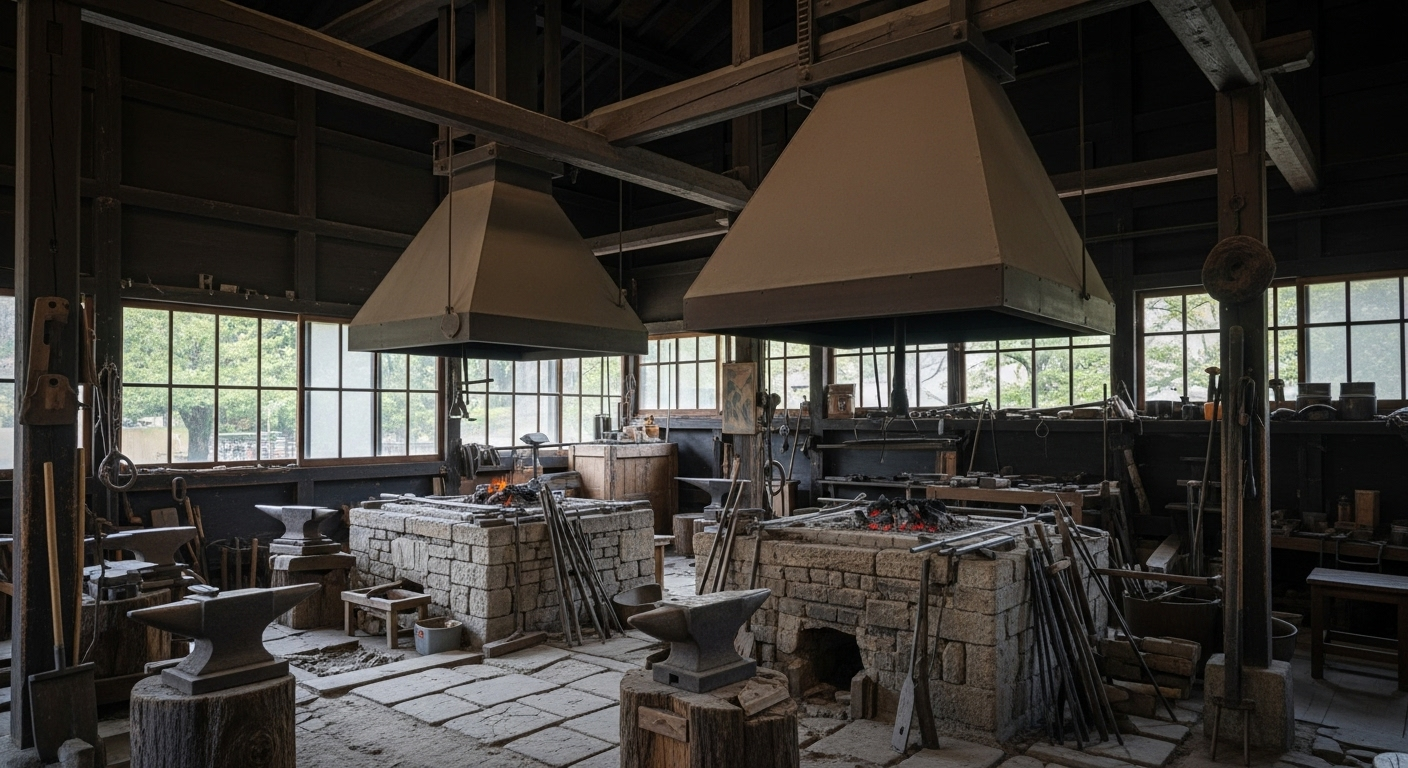
FAQ About Kido Finishing

Q1. What is Kido Finishing?
Kido Finishing is a traditional hand-polishing technique developed and perfected in Sakai, Japan, a city renowned for centuries of fine blade craftsmanship. This method produces a subtle, refined luster on the blade—more understated than a mirror finish, yet more elegant and sophisticated than a kasumi (frosted) finish. It embodies quiet confidence, meticulous craftsmanship, and the Japanese appreciation for understated beauty.
Q2. Why does Kido Finishing increase the value of a knife?
Kido Finishing requires exceptional skill, patience, and time. Each blade is hand-polished by master artisans who dedicate years to mastering the technique. Its value lies not only in the hours of labor but also in the heritage, precision, and devotion that go into each piece. For those who appreciate subtle elegance and true craftsmanship, a Kido-finished knife represents lasting value beyond its price.
Q3. Why is Kido Finishing unique to Sakai?
Kido Finishing has been preserved in Sakai thanks to its unique system of division of labor, where each craftsman specializes in a single stage of knife-making. Outside Sakai, very few artisans have the training or cultural knowledge to carry out this finish. It is the product of generations of expertise and a cultural commitment to quiet, refined beauty—a hallmark of Sakai’s legacy.
Q4. Is a Kido-finished knife difficult to maintain?
Not at all. One of the practical advantages of Kido Finishing is ease of care. Unlike mirror-polished blades, it resists visible fingerprints, water spots, and minor scratches, making it ideal for everyday use by both professionals and home cooks. It allows you to enjoy refined beauty without constant upkeep.
Q5. Does Kido Finishing affect cutting performance?
Yes, though subtly. While the sharpness comes primarily from the edge itself, the smooth, refined finish reduces drag as the blade passes through ingredients. This means slices are cleaner, textures are better preserved, and food presentation remains elegant—qualities especially appreciated in Japanese cuisine.
Q6. Why is Kido Finishing rare and highly valued today?
Because very few artisans still practice it. As the number of traditional craftsmen declines, Kido Finishing has become increasingly rare. Each knife finished this way is not only a functional tool but also a cultural artifact, representing the spirit of Sakai craftsmanship. Owning such a piece means holding a fragment of Japanese tradition that is fading but deeply treasured.

The Final Touch: Kido Finishing
In Sakai, a knife’s true character is revealed in its final stage—Kido finishing. This centuries-old tradition transforms forged steel into a masterpiece, where precision, beauty, and trust come together in the hands of artisans.
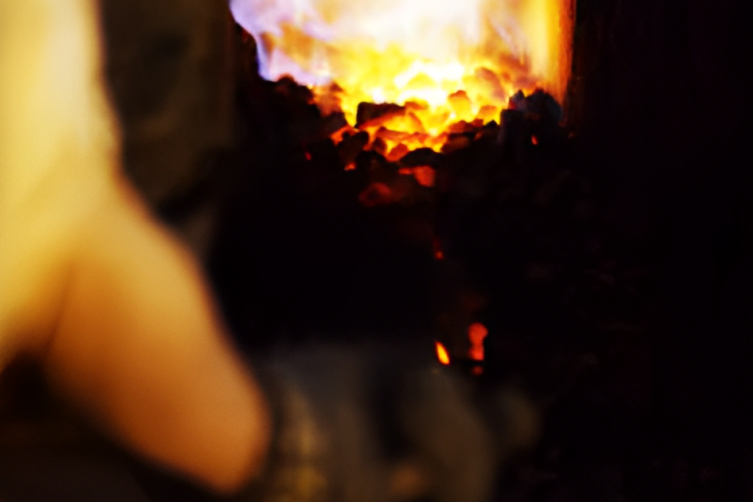
The Soul of Craftsmanship
-
No Compromise in the Last Five Minutes
Kido Finishing is not simply polishing.
It is the act of breathing life into a blade—through your hands, your eyes, and your intuition.It doesn’t gleam like a mirror.
It isn’t clouded like kasumi.
That is precisely its beauty: a quiet elegance, known only to the one who holds the knife.When I polish, I am not merely working—I am in dialogue with the blade. At times, it seems to whisper, “Be gentle here.” So I respond: adjusting pressure, pausing, shifting the angle. No machine can hear such a voice. Only a craftsman can.
-
I often tell the younger artisans:
“The last five minutes decide the worth of a knife.”
Kido Finishing is those final minutes—where tradition, pride, and soul converge.That is why I never compromise.
This is not just a technique.
It is the pride of Sakai, handed down through generations.
How Japanese Knives Are Made: The Sakai Tradition
VIDEO PROVIDED: JAPAN TRADITIONAL CRAFTS AOYAMA SQUARE (YOUTUBE)
-
Sakai Forged Blades — Six Centuries of Unrivaled Craftsmanship
Loved by chefs around the world and trusted by 98% of Japan’s top culinary professionals, Sakai knives are more than tools—they are the living legacy of over 600 years of master craftsmanship.
-
At KIREAJI, we work directly with the Shiroyama Knife Workshop in Sakai, Japan, ensuring every blade is hand-forged, finished to perfection, and shipped straight from the workshop to kitchens across the globe. No middlemen. No mass production. Only authentic, artisan-made knives, crafted to elevate your cooking for a lifetime.


